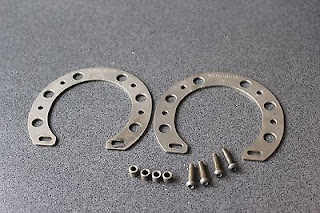When you're in the big city, it's all about being seen.
I'm not talking about the paparazzi spotting you in a trendy Meatpacking District bar or along a Paris boulevard--although I could be. Rather, I am referring to cycling along a city's streets and byways, especially at night.
These days, most of us are using "blinkies" attached to our helmets, bags or bikes. On most urban thoroughfares, brighter is better, as you want to stand out among the streetlights, neon signs and other sources of ambient urban light. Many of us have also taken to wearing reflective vests over our clothing. There are also all sorts of other accessories made of reflective materials we can use.
Now Michelin--yes, that Michelin--has come up with a new and possibly better way of making us more visible to drivers and others.
Its new "Bikesphere" is a "smart" device that attaches to the handlebars. It has light and proximity sensors that analyze what's going on around the cyclist. If a car approaches, it laser-projects a red ring of light around the cyclist. As the car draws closer, the projection intensifies and is more visible to both the cyclist and motorist.
This beacon is meant to show a "safe" distance between the motorist and cyclist. According to Michelin, more than t 20 percent of drivers don't honor this distance--usually because they don't realize how close they actually are to a cyclist--and cause more than 5000 avoidable crashes every year.
In daylight, and in good-visibility conditions, Bikesphere saves its batteries and activates only its shining "position lights".
Bikesphere is the first product to come out of Michelin's Trendy Drivers movement, which crowdsources ideas and provides funding for them. Currently, Bikesphere is not available for sale, and Michelin has not yet given as to when it might be.
I'm not talking about the paparazzi spotting you in a trendy Meatpacking District bar or along a Paris boulevard--although I could be. Rather, I am referring to cycling along a city's streets and byways, especially at night.
These days, most of us are using "blinkies" attached to our helmets, bags or bikes. On most urban thoroughfares, brighter is better, as you want to stand out among the streetlights, neon signs and other sources of ambient urban light. Many of us have also taken to wearing reflective vests over our clothing. There are also all sorts of other accessories made of reflective materials we can use.
Now Michelin--yes, that Michelin--has come up with a new and possibly better way of making us more visible to drivers and others.
Its new "Bikesphere" is a "smart" device that attaches to the handlebars. It has light and proximity sensors that analyze what's going on around the cyclist. If a car approaches, it laser-projects a red ring of light around the cyclist. As the car draws closer, the projection intensifies and is more visible to both the cyclist and motorist.
This beacon is meant to show a "safe" distance between the motorist and cyclist. According to Michelin, more than t 20 percent of drivers don't honor this distance--usually because they don't realize how close they actually are to a cyclist--and cause more than 5000 avoidable crashes every year.
In daylight, and in good-visibility conditions, Bikesphere saves its batteries and activates only its shining "position lights".
Bikesphere is the first product to come out of Michelin's Trendy Drivers movement, which crowdsources ideas and provides funding for them. Currently, Bikesphere is not available for sale, and Michelin has not yet given as to when it might be.


























